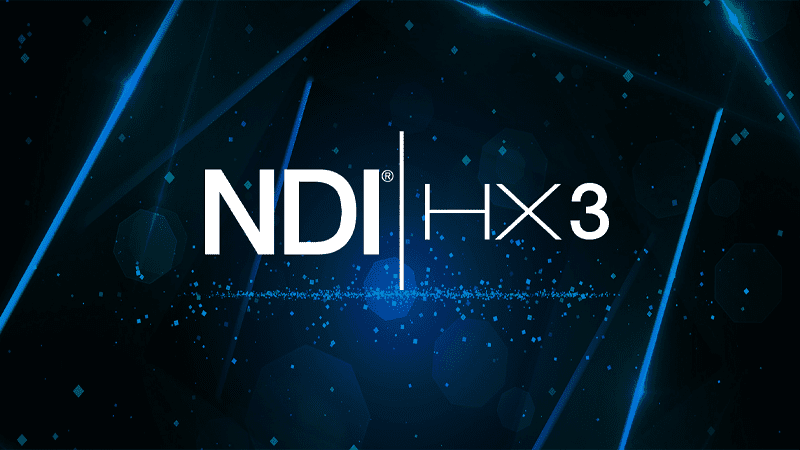NewTek announce NDI | HX 3 with reduced streaming latency

Table of Contents
NewTek, the company behind many studio production hardware and software, including Tricaster, have announced the next iteration of their HX variant of the NDI technology. This version should bring lower latency – an overall 8ms less than High Bandwidth – and better image quality to those taking advantage of the technology.
What is NDI?
Network Device Interface, or NDI, is a network protocol that allows high-quality video streams to be sent around a local, eliminating the need for long spools of SDI or HDMI cable to be run through a studio.
Prime Day is finally here! Find all the biggest tech and PC deals below.
- Sapphire 11348-03-20G Pulse AMD Radeon™ RX 9070 XT Was $779 Now $739
- AMD Ryzen 7 7800X3D 8-Core, 16-Thread Desktop Processor Was $449 Now $341
- ASUS RTX™ 5060 OC Edition Graphics Card Was $379 Now $339
- LG 77-Inch Class OLED evo AI 4K C5 Series Smart TV Was $3,696 Now $2,796
- Intel® Core™ i7-14700K New Gaming Desktop Was $320.99 Now $274
- Lexar 2TB NM1090 w/HeatSink SSD PCIe Gen5x4 NVMe M.2 Was $281.97 Now $214.98
- Apple Watch Series 10 GPS + Cellular 42mm case Smartwatch Was $499.99 Now $379.99
- ASUS ROG Strix G16 (2025) 16" FHD, RTX 5060 gaming laptop Was $1,499.99 Now $1,274.99
- Apple iPad mini (A17 Pro): Apple Intelligence Was $499.99 Now $379.99
*Prices and savings subject to change. Click through to get the current prices.
The protocol is split into versions, a “full fat” NDI, which uses the full capabilities of a connection to transfer up to 4K video over Ethernet and HX, a lower-end variant that can be used to beam video over Wi-Fi.
Companies like BirdDog have taken full advantage of the technology, offering dedicated devices to convert traditional equipment into an NDI point for programs like Wirecast, OBS and NewTek's Tricaster hardware to pick up by just simply being on the same network.

HX is commonly used in mediums that don't require the 1-to-1 connection that full NDI brings, or might require a wireless connection to transfer the video over.
This can still be in broadcast, where cameras set up will be connected to an NDI HX point (over a capture card to a PC outputting it) where it'll transfer over to on-site endpoint which will do the transmitting, but it is often ‘lagging' behind in both physical time and quality, due to the lower tier connection being used.
NDI HX can sometimes be found in things like digital advertising displays or at conventions, where the timing doesn't particularly matter as it's simply just going to be viewed, not needed on a broadcast.
NDI HX 3 is designed to bring the HX version a new lease of life with reduced need for bandwidth over the full version while offering better quality than the prior 2.
It doesn't even need any real hardware updates, as it seems that NewTek is going to offer it as a software update alongside the prior version for those that might not be able to work with it just yet.
As indicated in NewTek’s charts, the latency between HX3 and High Bandwidth will be ‘very low’, bringing a great alternative for those without the capacity to work with a much higher quality image that doesn’t suffer from the latency issues that can cause issues with productions using the NDI HX2 protocol.
The latency thing does have that caveat of some cameras’ processes still causing image lag, but the overall latency of NDI HX3 is only a mere 8ms.

